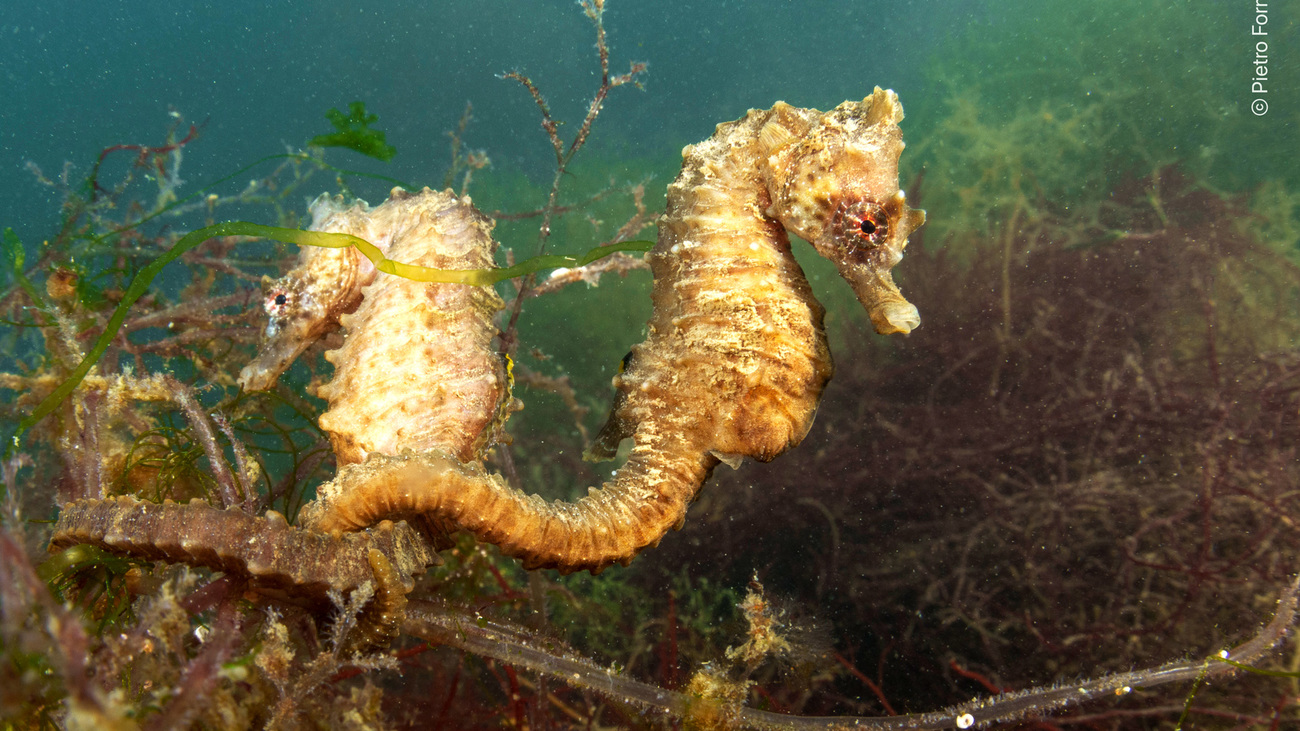Rescuing 800 seahorses saves lives and supports critical research
Rescuing 800 seahorses saves lives and supports critical research
In the coastal waters of the Adriatic Sea, two seahorse species make their homes among the seagrass meadows and algal beds. Their prehensile tails cling to the vegetation, using it as camouflage as their snouts suck in thousands of tiny crustaceans every day.
By constantly feeding on large quantities of amphipods, mysids, copepods, and other small crustaceans, they help keep their habitats in balance. But both species—the long-snouted and short-snouted seahorse—have suffered a sharp decline of 20-30% in their populations in recent decades.

That’s why IFAW is proud to support Italy’s first dedicated seahorse hospital, the Seamaster Seahorse Rescue Center. The hospital is an initiative by CESTHA—Centro Sperimentale per la Tutela degli Habitat (Experimental Centre for Habitat Protection)—a research group that focuses on marine conservation, rescue and rehabilitation, and education.
Improving seahorse survival rates
Fishing and habitat loss are two of the biggest threats facing these vulnerable animals. Cuttlefish, a staple of Italian coastal cuisines, live in the same habitats as seahorses. Italy’s artisanal fishing industry uses traps and trammel nets to catch cuttlefish, while bigger commercial vessels drag trawls along the seabed. Although seahorses are not the intended targets, they end up as bycatch or have their habitats destroyed by trawlers.
The Seamaster Seahorse Rescue Center provides specialised care and rehabilitation for injured and bycatch seahorses, with the goal of releasing them back into protected marine areas.
Since cuttlefish season runs from March or April to August, that’s the most dangerous time for seahorses and the busiest for rescuers. This year’s cuttlefish season started in early March, and in the first month alone, the CESTHA team rescued an astounding 800 seahorses. One hundred of those are still receiving care from the hospital, while 700 were healthy enough to immediately release.
One of the hospital’s first priorities is to expand their care facility, so they are renovating a 90-square metre concession area next to the CESTHA Sea Turtle Rescue Center with new tanks. CESTHA marine biologists estimate they can save around 2,000 seahorses annually once the expansion is complete in July.

Raising awareness among the fishing industry
Some of the most important people involved in protecting seahorses are fishers themselves. CESTHA works to improve their understanding and awareness of bycatch and how it impacts seahorses.
The fact that so many seahorses have been rescued and released already this season means that efforts to raise local fishers’ awareness have yielded incredible results. Their attention to the plight of these tiny marine animals has increased extraordinarily.
‘Seahorses may be small, but their role in maintaining the balance of marine ecosystems is immense,’ said Neil Greenwood, IFAW’s Director of Wildlife Rescue.
‘This collaboration highlights the importance of local conservation efforts backed by global support.’
Related content
every problem has a solution, every solution needs support.
The problems we face are urgent, complicated, and resistant to change. Real solutions demand creativity, hard work, and involvement from people like you.